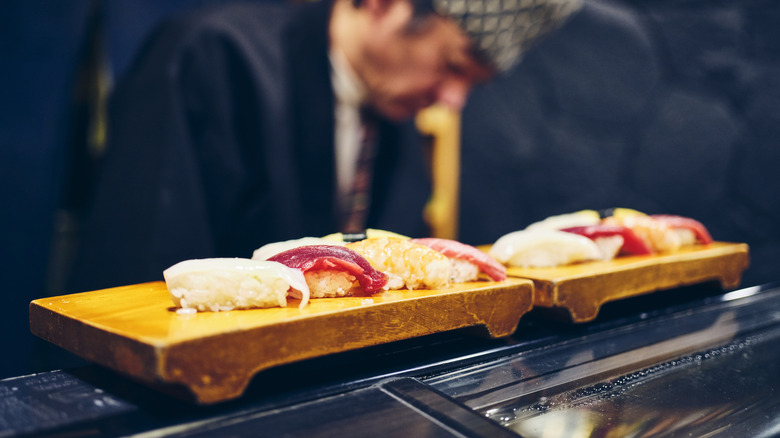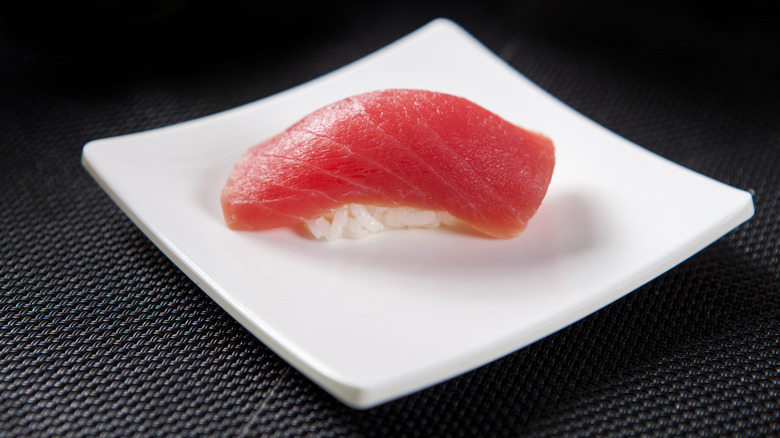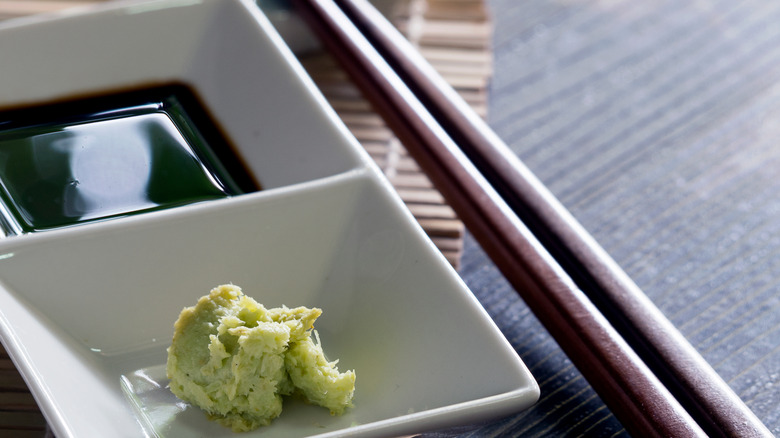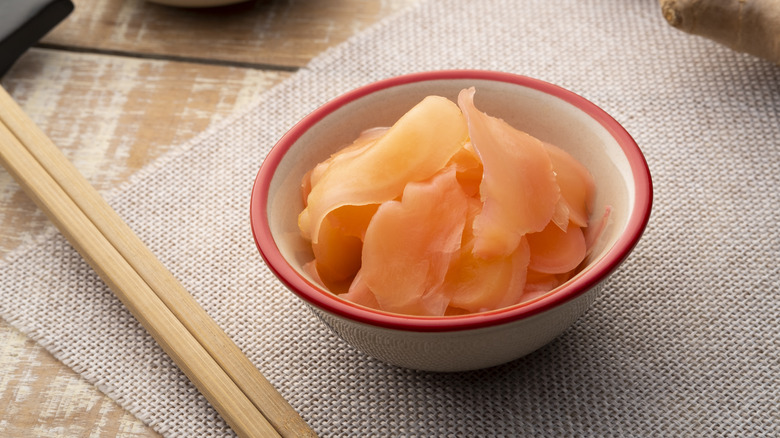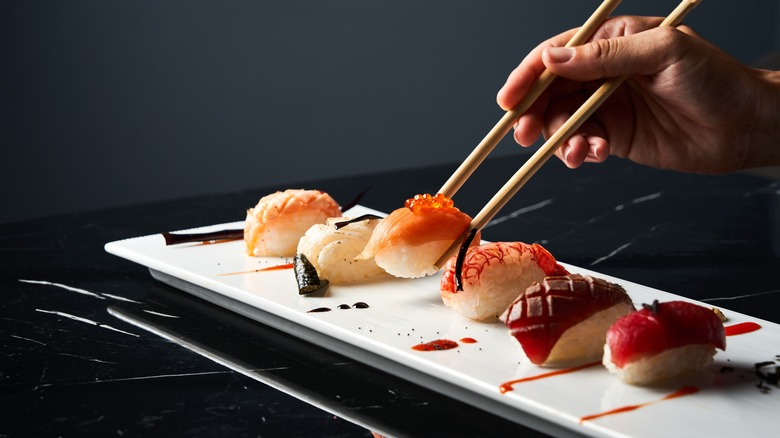5 Tips On Eating Sushi According To A Pro
Eating sushi — like making sushi — is all about precision. Take it from a master of the trade: Shingo Akikuni stands among the most highly-respected sushi chefs working in America today. A third-generation chef from Osaka, Akikuni honed his craft in the Tokyo and New York restaurant scenes before settling in Miami, where he led omakase restaurant Hiden to one of the first Michelin stars in Florida history. In 2023, he opened the eponymous Shingo, which was awarded a Michelin star in its first year of business.
Akikuni has been part of a major sushi movement, along with chefs like Masayoshi Takayama and Daisuke Nakazawa, which seeks to bring the traditional Japanese sushi experience to the United States, expanding the American palate beyond New York and California rolls to the proud conventions of classic nigiri, sashimi, and maki rolls. But sushi in Japan is more than food — it is a cultural institution. Akikuni spoke to Chowhound and explained the five most important principles of eating sushi, so the next time you go out to eat, you'll know just what to do to get the most out of your experience.
Eat it in one bite
Sushi is designed to unite subtle flavors in one cohesive bite. Many American restaurants serve large sushi rolls that have pulled away from this philosophy, but high-quality sushi should be bite-sized. "A no-no would be not eating the entire nigiri in one bite," Shingo Akikuni explains. "It is bite-sized so you can enjoy the flavors at once."
Most bite-sized sushi pieces are best eaten with your fingers. Chopsticks are customary for cooked dishes, though you can use them for nigiri and other types of sushi as well. It boils down to what you're most comfortable with, as Akikuni notes on his restaurant's website. However, while sushi is made with sticky rice, which is sometimes unwashed, the nigiri isn't supposed to be packed too tightly lest the grains merge into indistinct mush; this means it can sometimes yield a bit too much in the grips of a pair of chopsticks. You may be more delicate when using your fingers, which will allow you to get the whole bite to your mouth without the nigiri or temaki falling to bits.
You don't always need soy sauce and wasabi
Many of us are inclined to dip our sushi in soy sauce and wasabi before we take a bite, but this isn't always the right move. In most instances, especially when seated at the sushi bar, the nigiri will already have little dabs of soy sauce applied and wasabi placed between the fish and the rice. In that case, adding more soy and wasabi is unnecessary, and could overwhelm the delicate flavor of the fish.
Shingo Akikuni isn't a fan of mixing soy sauce and wasabi. "I would say keeping them separate allows you to control the amounts to your liking," he notes, although he does point out that mixing soy sauce with wasabi is a very common practice in Japan. It's really up to the diner, but if you do choose to dip your sushi in soy sauce and wasabi, do it gently — don't dunk the whole piece in. It's best to dip only the edge of the fish, as adding soy sauce to the rice could make the sushi fall apart.
Ginger doesn't go on the sushi itself
Besides soy sauce and wasabi, the other condiment people tend to reach for is pickled ginger, known as "gari" in Japan. Oftentimes, people will eat a piece of the ginger along with their sushi, but doing so is actually one of the biggest sushi sins. "Putting ginger on top of sushi completely ruins the flavor profile of nigiri because all you will be able to taste is the ginger," Shingo Akikuni warns. The gari is especially strong, combining two potent ingredients: ginger and vinegar. The subtlety of sushi fish can't stand up to such powerful flavors.
Akikuni still serves pickled ginger at Shingo. Every sushi restaurant should, but you need to use it the right way. Gari is meant to serve as a palate cleanser. You should eat a piece between each round of sushi, so that the flavors of each fish never cross over. You should have a fresh palate for every kind of sushi you eat.
Don't wear perfume or cologne to a sushi restaurant
The flavors of sushi are typically quite delicate. Fish like salmon, eel, and yellowtail have meaty, buttery flavors, but they are mild. The less ingredients you add, the more these flavors will shine. On top of the fish, sushi rice is made with a dash of sugar and vinegar, and you want to give space for that sweet-and-sour marriage to come through. Additional ingredients aren't the only things that can overwhelm the flavor of sushi though. Believe it or not, your own scent plays an important role.
It's estimated that 80 to 90% of what we call "flavor" comes from smell, not our taste buds. This being the case, strong-smelling perfumes and colognes can weaken your perception of flavor, and some flavors can be so subtle that you'll miss out on them completely. Furthermore, it is customary for all the diners at a sushi restaurant to sit close together at the sushi bar in front of the chef, so a strong perfume or cologne could impact your fellow diners as well.
Start with lean fish, then move on to fattier fish
Lastly, it's important to eat each type of sushi in a specific order to get the most out of every bite. Most fine-dining sushi restaurants, including Shingo, will have a set tasting menu, and in those cases the chef will handle the order of your courses. If you're left to your own devices, however, here's what you should do: Start by ordering lean fish, and gradually build up to fattier ones.
Fattier cuts of fish, like o-toro (cut from a tuna's belly), are bursting with an almost buttery richness that can often coat your mouth. These more intensely flavorful fish have a tendency to linger on the palate, which can disrupt the taste of milder fish like albacore. A general rule of thumb is to start with white fish. Akami, a reddish-pink cut of tuna that's leaner, could be a good midpoint. Shingo Akikuni recommends seeking out chu-toro, a medium-fatty cut of tuna that's slightly leaner than o-toro, and kohada, or gizzard shad, which is often served intricately braided or cut. He considers these fish "a baseline measure for skill and spotting a good sushi restaurant." With Akikuni's tips, you'll be eating sushi like a pro in no time.
